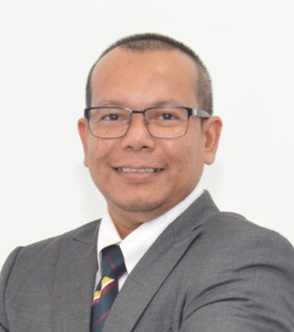
-
The Second Asia Workshop on Software Engineering
Sept. 16-18, 2022 ▪ Online
 Prof.
Mohd Shafry Mohd Rahim
Prof.
Mohd Shafry Mohd Rahim
University Technology Malaysia, Malaysia
Mohd Shafry Mohd Rahim is currently a Professor and Chair, Institute for Life Ready Graduate, Universiti Teknologi Malaysia (UTM). He is also a professor at School of Computing, UTM and Senior Research Fellow at Media and Game Innovation Centre of Excellence (MaGICX), Institute of. Human Centred Enggineering (iHumEn), UTM. Prof. Shafry has received a B.Sc. (Hons.) Computer Science and M.Sc. in Computer Science from Universiti Teknologi Malaysia (UTM), Malaysia in 1999 and 2002, respectively. He has received a PhD in Spatial Modelling from Universiti Putra Malaysia (UPM), Malaysia in 2008. His research interests in image processing, image data analytics, computer graphics and medical imaging.
Speech Title: Medical Image Segmentation Approaches for Diagnostic Analytics
Abstract: Humans have a strong ability to process millions of data and information to assist in the decision-making process. With new disruptive technology, a trillion of medical data has been flooded into cloud computing and require an analytical process to produce valuable diagnosis information. Images are one of the data collected using a variety of sensors that carry a lot of valuable information for the diagnosis process. Therefore, Medical Image Diagnostic Analytics is a very significant research area to be strengthened in the new era of Big Data to improve healthcare industries by providing reliable information. The most important process in Medical Image Analytics is image segmentation. Image segmentation is to extract clinically relevant information with intelligent insight. There are several methods can be used in the segmentation process. In this discussion, several image segmentation methods will be presented. The advantages and disadvantages of each method are described besides examination of each algorithm with its application in Magnetic Resonance Imaging and Computed Tomography image analysis. Each algorithm is explained separately with its ability and features for the analysis of grey-level images. In order to evaluate the segmentation results, some popular benchmark measurements also presented in the final section. In this keynote, the discussion also focuses on experiences in Medical Image Diagnostic Analytics and discussing key challenges in various types of data for further research including semantic gaps.
 Prof.
Dayang Norhayati Abang Jawawi
Prof.
Dayang Norhayati Abang Jawawi
University Technology Malaysia, Malaysia
She is a professor at the School of Computing, Faculty of Engineering, UTM. She
received her B.Sc. in Software Engineering from Sheffield Hallam University, UK,
and her M.Sc. and Ph.D. in the field of Software Engineering from UTM. She has
served as an academic administrator at UTM, since 2009 and currently she is
Associate Chair (Academic and Student Development) at School of Computing,
Faculty of Engineering, UTM. Her research areas are software engineering and
computing education. Most of her research projects are focused to the domain of
educational robotics, computational thinking, healthcare system and real-time
embedded system application.
Speech Title: Nurturing Computational Thinking Skills: An Adaptive Approach
Abstract: The fourth industrial revolution bring changes in terms of
technologies and a major shift in the job environment. One of the important
skills can be promoted with this revolution is computational thinking (CT)
skills. CT is a vital and fundamental skill which involved solving problems
activities, designing system, and also understanding human behavior by mapping
the concepts into computer science discipline.
The Covid-19 pandemic have demanded the education system to utilize the digital
platform in ensuring that the teaching-learning process can be conducted amid
the pandemic. Thus, in this sense, ubiquitous learning is a learning environment
to support digital learning paradigm. The overall purpose of this presentation
is to share an adaptive approach to nurture students’ CT skills in ubiquitous
learning environment. The approach enables students to have better opportunity
in learning CT concepts and exploring various methods and technologies used in
education including gamification and educational robotics.